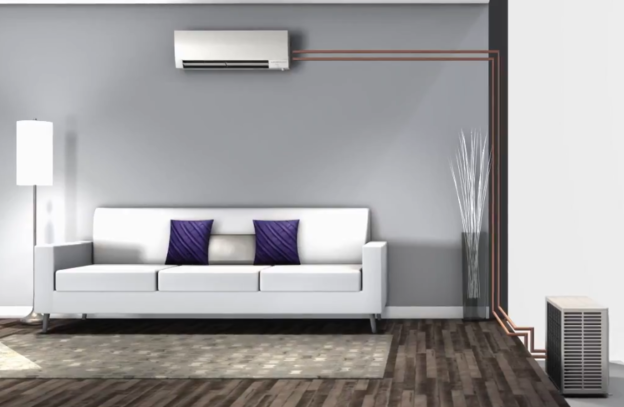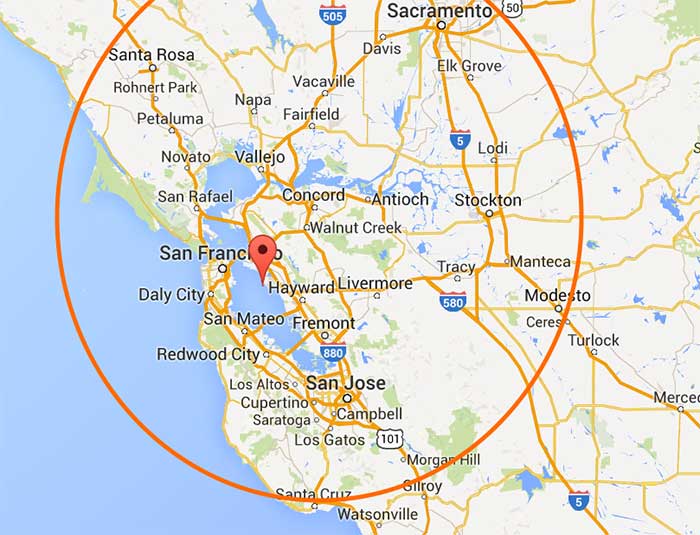Element Home Solutions has added great new heating and cooling systems to our roster of available home energy solutions. One that homeowners are finding attractive is the Hyper-Heating® Technology from Mitsubishi Electric’s Cooling and Heating Division.
If you are considering installing a hew heating and air conditioning system, we may recommend this new technology as a solution.
How does Mistubishi Hyper-Heating® Technology improve heating system performance?
When the Bay Area rainy season drops temperatures, your home’s heating source may not keep all the rooms in your house comfortable. Supplementing your existing oil, gas, propane or wood system is the solution. Hyper-Heating technology is designed to provide you with year-round comfort even in our rainy winter.
Hyper-Heating vs. Conventional Heat Pumps
Split-ductless heat pumps, which feature an indoor and outdoor unit, allow homeowners to cool and heat their homes without the hassle, expense and inefficiency associated with furnaces, stoves, and other traditional air conditioning methods.
How do they work? Heat pumps use refrigerant to transfer heat. In the winter, they absorb warmth from the outside air and transfer it inside. In the summer, they extract warmth from the home and transfer it outside.
These heat pumps were traditionally designed for moderate climates and couldn’t handle extreme temperatures. As the Bay Area begins to experience more temperature extremes, a modernized split-ductless system was needed where the refrigerant could work more efficiently so the pumps can bring in enough heat. Patented Hyper-Heating technology erases the 20°+ separating you from year-round comfort, energy savings and increased efficiency.
Year-Round Heating and Air Conditioning Comfort and Control
Hyper-Heating INVERTER® (H2i®) technology uses an enhanced compressor system to deliver heat down to an outside temperature of -13° F. Supplementing your existing climate control system with Hyper-Heating offers a number of other benefits:
Heating System Efficiency
H2i systems qualify for the ENERGY STAR Tier 2 level. This means that these ductless mini-splits go above and beyond ENERGY STAR’s minimum requirements for efficiency. The INVERTER-driven compressor uses only the energy it needs to cool or heat an area. It automatically senses and responds to changes without constantly turning on and off. This saves energy – and money.
Energy Bill Cost Savings
Oil, propane, and gas heating bills can give you sticker shock, especially during cold (or hot) snaps. By using a Hyper-Heating solution as a supplement, you can dramatically cut your costs. Some users see a 50% reduction in energy use. You may also qualify for tax incentives, rebates and other programs.
Room-by-room Comfort
Do you spend most of your time in the living room with your family or working in your home office? Why heat unused rooms? Ductless units offer precise control so you keep the rooms you use most at your ideal temperature. They also allow you to heat rooms that your existing system doesn’t reach efficiently or effectively. Whether you want to work comfortably in your garage or turn your three-season porch into a four-season addition, Hyper-Heating puts the control into your hands. Guess what? This saves money too.
Ductless Energy System Installation
An H2i system can usually be installed in about a day. No messy ductwork. No huge remodelling bill. No damage to your home’s architectural integrity. These ductless heat pumps work seamlessly with your existing climate control system.
They can adapt to meet the changing needs of your home so you enjoy year-round comfort in extreme temperatures. Don’t let the term “Hyper-Heating” fool you. They cool as effectively as they heat. You don’t need a separate unit, or another expense, to condition your home in the summer.
Supplementing your home HVAC system simply and quickly is now a reality for Bay Area homeowners, thanks to Hyper-Heating technology, efficient, effective ductless heat pumps.
Contact us for a more personalized assessment of how this could supplement your heating system.
This article was adapted from a Mitsubishi Cooling and Heating Division article.






